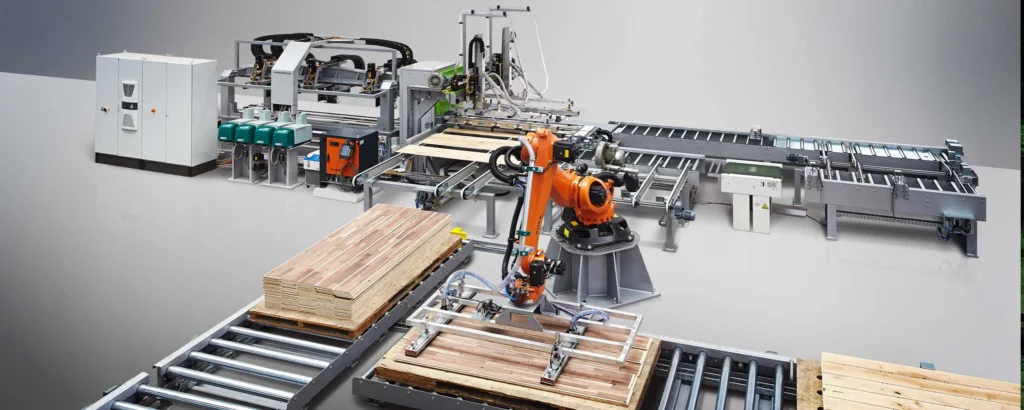
Precision woodworking with industrial automation is the use of robots and other automated systems to perform precision woodworking tasks. This can include tasks such as:
- Cutting wood to precise dimensions
- Shaping wood using routers, CNC machines, and other tools
- Assembling wood products
- Finishing wood products
Industrial automation is increasingly being used in precision woodworking because it offers a number of advantages over traditional manual woodworking methods, including:
- Increased accuracy: Industrial automation systems can perform tasks with a higher degree of accuracy than human woodworkers. This is because industrial automation systems are programmed to follow instructions precisely.
- Increased productivity: Industrial automation systems can perform tasks much faster than human woodworkers. This can lead to increased productivity and output.
- Reduced costs: Industrial automation can help to reduce labor costs by eliminating the need for manual labor.
- Improved safety: Industrial automation can help to improve safety by reducing the exposure of workers to hazardous materials and equipment.
Industrial automation is used in a variety of precision woodworking applications, including:
- Furniture manufacturing
- Cabinetmaking
- Musical instrument manufacturing
- Architectural woodworking
- Product prototyping
Here are some examples of industrial automation systems used in precision woodworking:
- CNC routers: CNC routers are computer-controlled routers that can be used to cut and shape wood with a high degree of accuracy.
- CNC machining centers: CNC machining centers are computer-controlled machines that can be used to perform a variety of woodworking tasks, including cutting, drilling, and milling.
- Robotic assembly systems: Robotic assembly systems can be used to assemble wood products with a high degree of accuracy and repeatability.
- Automated finishing systems: Automated finishing systems can be used to apply finishes to wood products, such as paint, stain, and varnish.
Industrial automation is playing an increasingly important role in precision woodworking. By automating tasks, industrial automation systems can help precision woodworkers to improve accuracy, productivity, costs, and safety.
Here are some of the latest trends in precision woodworking with industrial automation:
- The use of collaborative robots: Collaborative robots, also known as cobots, are robots that are designed to work safely alongside human workers. Cobots are being used in precision woodworking to perform tasks that are difficult or dangerous for human workers to perform, such as loading and unloading CNC machines.
- The use of artificial intelligence (AI): AI is being used to develop industrial automation systems that can learn and adapt to changing conditions. This is making industrial automation systems more flexible and versatile, and better suited for precision woodworking applications.
- The use of cloud computing: Cloud computing is being used to make industrial automation systems more accessible and affordable for precision woodworkers. Cloud computing allows precision woodworkers to access powerful industrial automation systems without having to invest in their own hardware and infrastructure.
Precision woodworking with industrial automation is a rapidly evolving field. New technologies and applications are being developed all the time. Precision woodworking with industrial automation is playing an increasingly important role in helping precision woodworkers to produce high-quality products.
